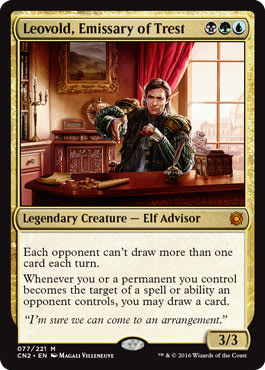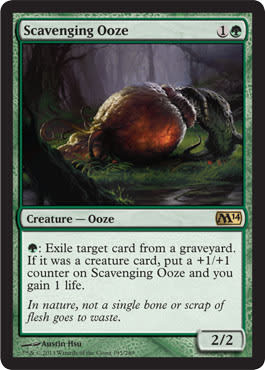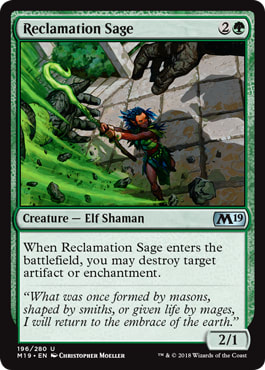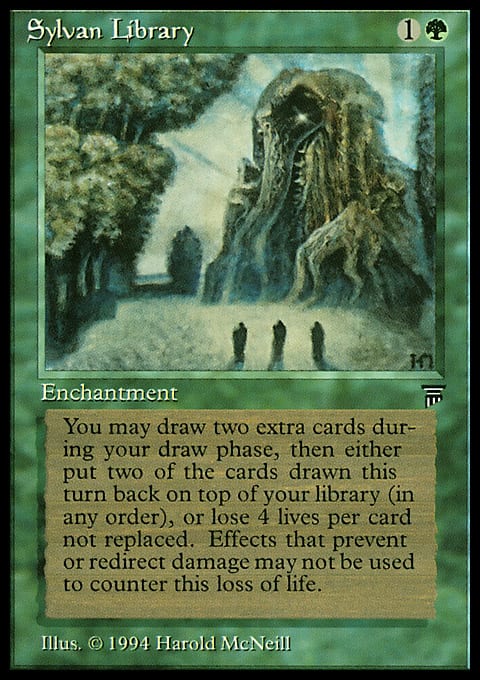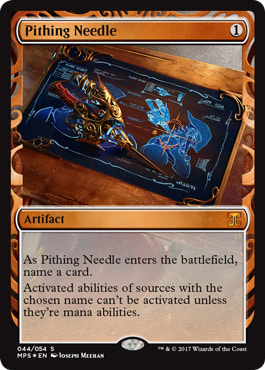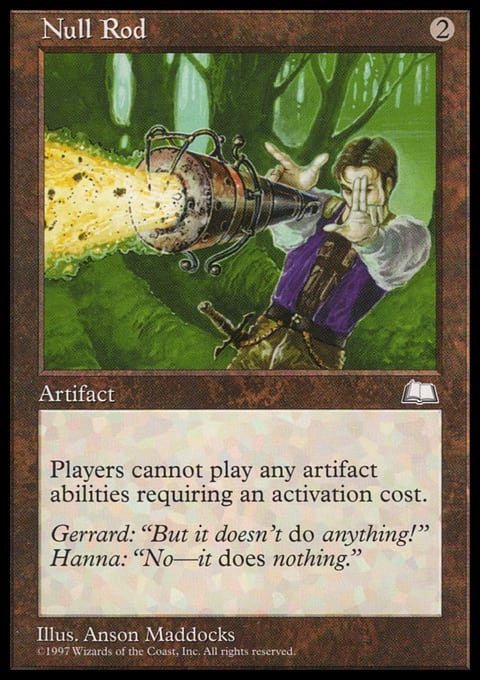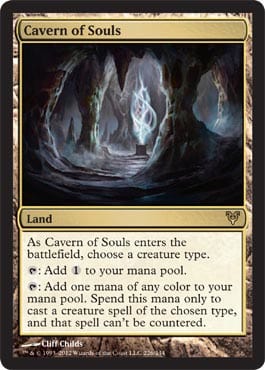The Lord of the Rings
The Godfather
Star Wars
The Dark Knight
The Mighty Ducks
My Elves Guide
All great things come in trilogies.
This will be the final installment in my Legacy Elves guide. If you didn’t catch the first two parts, you can read them here and here. At this point I’ve covered every card choice, my general philosophy regarding the deck, and some planning tips. To close it out, I’d like to discuss the omissions from my list and info pertaining to specific matchups. But before we get into that, I said I would further discuss a scenario from my last article.
The Play
Last time I said the decision could easily be boiled down to two options; leading on Quirion Ranger or leading on Nettle Sentinel. I suspect the initial instinct for a lot of players is to lead on Quirion Ranger in order to play around Wasteland. The logic here is perfectly sound, and the play is defensible, but I don't think it’s correct. I would be inclined to lead with Nettle Sentinel. As I mentioned last time, leading on Nettle Sentinel is much better in the event that your opponent has a removal spell and slightly better in the event that the opponent doesn’t interact with you on their turn. While getting hit with a Wasteland would be brutal, I like making the play that has a higher upside a much larger percentage of the time.
Notable Omissions
Leovold, Emissary of Trest, Scavenging Ooze, Reclamation Sage: Despite being fairly common in the main deck of many other lists, these were all omitted from mine for the same reason; they do not aid you when being proactive. Of the three, Leovold is the one I would be the mostly likely to main deck. It’s on a short list for the best creature in Legacy, and if the metagame ever reaches a point where you need a more potent backup plan, Leovold could be a solid inclusion. But for the time being, it’s not necessary. And while Reclamation Sage and Scavenging Ooze offer a lot of utility, there isn’t currently a matchup that’s both prevalent and demands you can interact with them on this axis. I’m completely content keeping them in the sideboard.
Sylvan Library, Pithing Needle, Null Rod: I played all of these cards in the sideboard for quite a long time. While they never disappointed during this period, they were all primarily included in order to combat Miracles. Without Miracles in the format, I’ve warped my sideboard a bit in order to beat combo decks and midrange decks, and I’ve been happy with the configuration. Pithing Needle is a card I could see adding back to the board soon. If the continued success of Lands leads to the deck showing up in larger numbers, it’s definitely a card I want access to.
Cavern of Souls: I hate playing Cavern of Souls. I started playing them right before Sensei's Divining Top was banned, and I was ecstatic to cut them afterward. There’s a very real cost to playing them. The biggest drawbacks of Cavern are related to the fact that Elves operates off a very low land count. Because of this you often keep one land hands, similar to the one land hand in my last article. If Cavern is the only land in your opening hand, you can’t use it to cast Green Sun's Zenith for Dryad Arbor which is a very common and useful play with land light hands. It also doesn’t synergize well with Quirion Ranger, and Quirion Ranger is your most useful card with land light hands. Cavern is only particularly useful against Daze and pushing through Craterhoof Behemoth. But any nonbasic land is generally a liability against Daze decks, and the Craterhoof scenario rarely comes up. I’m okay with playing one flex land, and I find Pendelhaven to be the more useful option.
Matchups
Grixis Delver:
Preboard: Overall, Elves is the favorite in the matchup, but like any deck that’s favored against Delver; you’re still going to lose a decent amount of the time. In Game 1, the most important card for them, by far, is Delver of Secrets. If they have a Delver of Secrets, attack your mana, and have counter backup, you’re probably going to lose. If they fail to establish a clock early, they simply don’t have the resources to compete with you in any sort of long game. It’s normally easy for them to disrupt you, but you have inevitability. Because of this, I’ll often slow roll my creatures that have more value in the late game, expecting my early creatures to get picked off by removal.
Sideboard Plan: +3 Abrupt Decay, +1 Progenitus, +1 Scavenging Ooze, -3 Heritage Druid, -1 Craterhoof Behemoth, -1 Natural Order
Postboard: I'm generally opposed to overboarding with the deck, especially in matchups that you’re already favored in, but slowing down the game is to your advantage here. With Abrupt Decay to answer Delver, you’ll often have a sufficient amount of time to set your engine up and take over the game. Because your opponent will also be more reactive postboard, the value of cards that single handedly win the game like Scavenging Ooze and Progenitus go up, and cards that rely on having a critical mass of resources like Heritage Druid and Craterhoof Behemoth go down.
Four-Color Leovold:
Preboard: This matchup plays out somewhat similarly to Grixis Delver, but with a few key differences. The most notable being their lack of a clock. This distinction is why this matchup is even better for Elves overall, but it’s not just all upside. Four-Color Leovold actually has the resources to compete with you in an attrition based game, and the card Leovold itself can be lights out. Because of this, I take a significantly more aggressive approach in this matchup. I’m willing to sacrifice equity in the late game in an attempt to close out the game earlier.
Sideboard Plan: +2 Abrupt Decay, +1 Progenitus, +1 Scavenging Ooze, -2 Heritage Druid, -1 Craterhoof Behemoth, -1 Nettle Sentinel
Postboard: Abrupt Decay is underwhelming in the matchup, but having an answer to Leovold is necessary. The logic behind the rest of the plan is the same as the logic behind the Grixis Delver plan. The only real difference is the fact that I like staying slightly more combo oriented here. They have less disruption and a better late game, so your combo oriented draws are much better.
Storm:
Preboard: Their average goldfish speed is faster than yours, and you can’t interact with them. You can win by going off first, but this doesn’t happen very often. If you know you’re playing against Storm, mulligan very aggressively. You cannot keep a hand that isn’t likely to win by the third turn.
Sideboard Plan: +4 Thoughtseize, +3 Surgical Extraction, +2 Cabal Therapy, -3 Elvish Visionary, +3 Wirewood Symbiote, -2 Glimpse of Nature, -1 Dryad Arbor
Postboard: Game 2’s still aren’t good for you, but they’re much closer. You still have to mulligan aggressively, but the range of hands you can keep is much wider, for you can keep both fast combo draws and hands with disruption. The philosophy behind this plan is simple; take out the grindier elements of the deck and board in your disruption. The only exception being Glimpse of Nature. Glimpse is your actual best card preboard, but trimming them is necessary. You simply board in too many spells to combo off with any real consistency. A card that can be difficult to play with here is Cabal Therapy. I’ve found that in the dark, the best card to name is Infernal Tutor, but there are plenty of cases where I’ll name other cards. For example if I’m on the play and have a 2nd Cabal Therapy, the card I’m most likely to name is Brainstorm. Your discard spells are your best cards in the matchup, so it’s important to make sure you’re getting the most you can out of them.
Lands:
Preboard: I’ve played against Lands countless times. But, if I’m being honest, I don’t really know who’s favored here. I have a very good record in the matchup, but it still doesn’t feel particularly favorable. But regardless of which side actually is favored, I can confidently say it’s not by much. The key here is just to get them dead. I’ve won some pretty insane games though Tabernacles and Glacial Chasms, but ideally you avoid these and win before they set their engine up. But it is important to note that you can win with Deathrite Shaman though Chasm. If you play against lands often, I highly recommend practicing your Deathrite math. Getting the maximum amount of value your Deathrite is absolutely critical.
Sideboard Plan: +3 Surgical Extraction, +1 Progenitus, +1 Scavenging Ooze, -2 Nettle Sentinel, -1 Craterhoof Behemoth, -1 Heritage Druid, -1 Birchlore Rangers
Postboard: I can’t stress enough how important it is to not overboard in this matchup. Even after boarding, your best chance of winning is still by ending the game quickly. Rather than board in a bunch of answers to cards like Sphere of Resistance, I’ve like staying combo oriented and just having Progenitus as your backup plan.
Death and Taxes:
Preboard: Elves is a sizeable favorite, but it’s far from unloseable. They have the tools to beat you preboard, but for the most part it takes an unrealistically good draw. They can’t interact with your combo, and they can’t beat your long game. The only really key here is to make sure they don’t connect with a Jitte.
Sideboard Plan: +3 Abrupt Decay, +1 Progenitus, +1 Reclamation Sage, -2 Heritage Druid, -1 Craterhoof Behemoth, -1 Birchlore Rangers, -1 Nettle Sentinel
Postboard: This is where the matchup actually becomes challenging. Most lists will have access to some real haymakers like Ethersworn Canonist and Containment Priest. The fact that these cards can be protected by Mother of Runes make them especially problematic. But overall, you should still be favored. You have answers to their hate cards in Abrupt Decay and Reclamation Sage, and because Elves can attack from a variety of angles, sticking just one piece of disruption is generally insufficient.
Reanimator:
Preboard: You lose.
Sideboard Plan: +4 Thoughtseize, +3 Surgical Extraction, +2 Cabal Therapy, -3 Elvish Visionary, +3 Wirewood Symbiote, -2 Glimpse of Nature, -1 Dryad Arbor, -1 Fyndhorn Elves
Postboard: This is almost certainly your worst matchup preboard. The deck can consistently put an Elesh Norn, Grand Cenobite into play on turn two, and the game ends on the spot. But after boarding, the matchup is slightly better than something like Storm because the deck isn’t nearly as resistant to hate. The same principles that apply to most combo matchups apply here as well; only keep hands with disruption and hands that can win on turn two (turn three if you’re already on a mulligan). The only real difference here is how much better Surgical Extraction is against Reanimator than other combo decks. Extraction is mediocre to solid against most combo decks, but it’s your best card here.
Elves:
Preboard: Despite being a very difficult deck to pilot, the Elves mirror isn’t exactly skill intensive. It’s a complete race, and the person on the play is a massive favorite.
Sideboard Plan: +2 Thoughtseize, +2 Cabal Therapy, -2 Deathrite Shaman, -2 Elvish Visionary
Postboard: The games slow down a bit with the introduction of discard spells, but for the most part it’s still just a race. I’m a fan of going light on the discard in order to ensure I can still go off with Glimpse consistently, but the amount of interaction you want can drastically change based on play/draw and your opponent’s postboard configuration.
There’s approximately a million different playable decks in Legacy, so I can’t possibly cover all of them. I chose these specifically based on popularity and how applicable the information is to other similar matchups, but if there’s anything you’re particularly curious about that I missed, don’t hesitate to ask.













